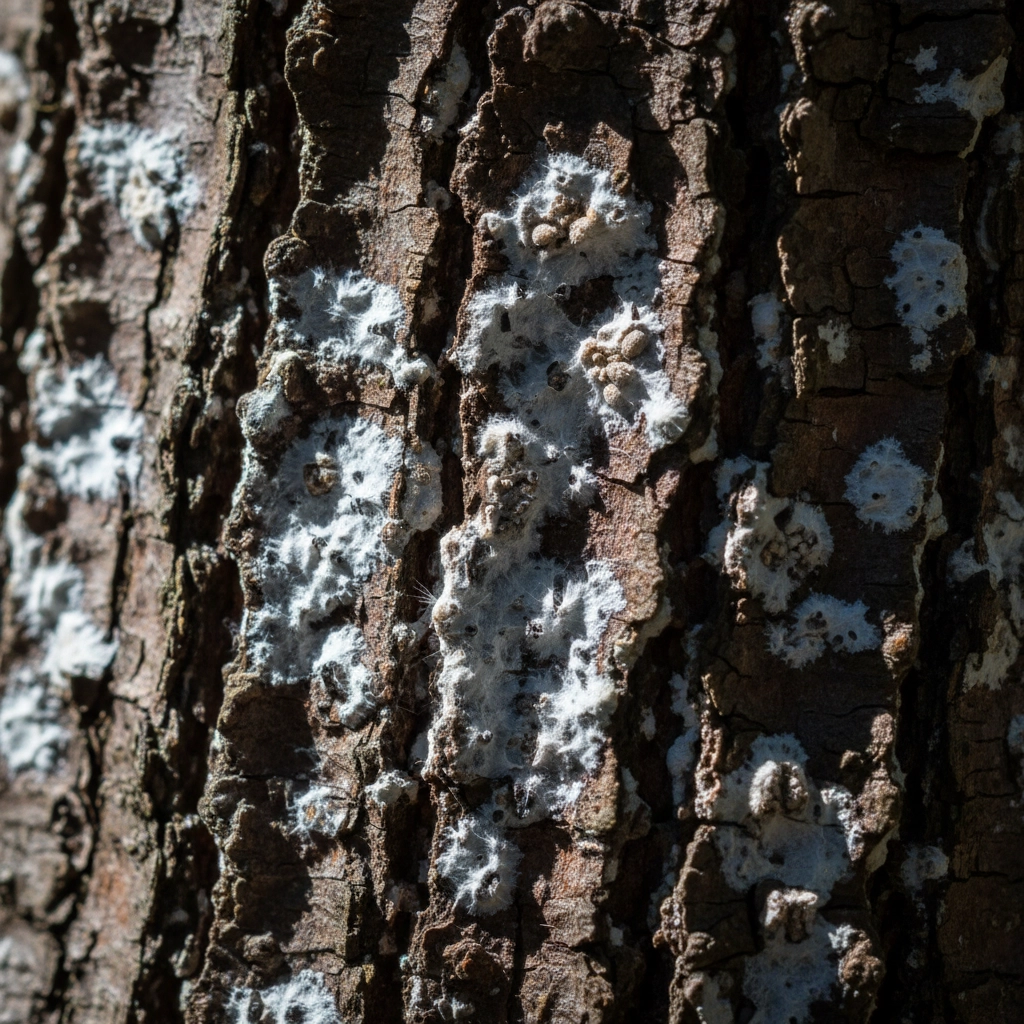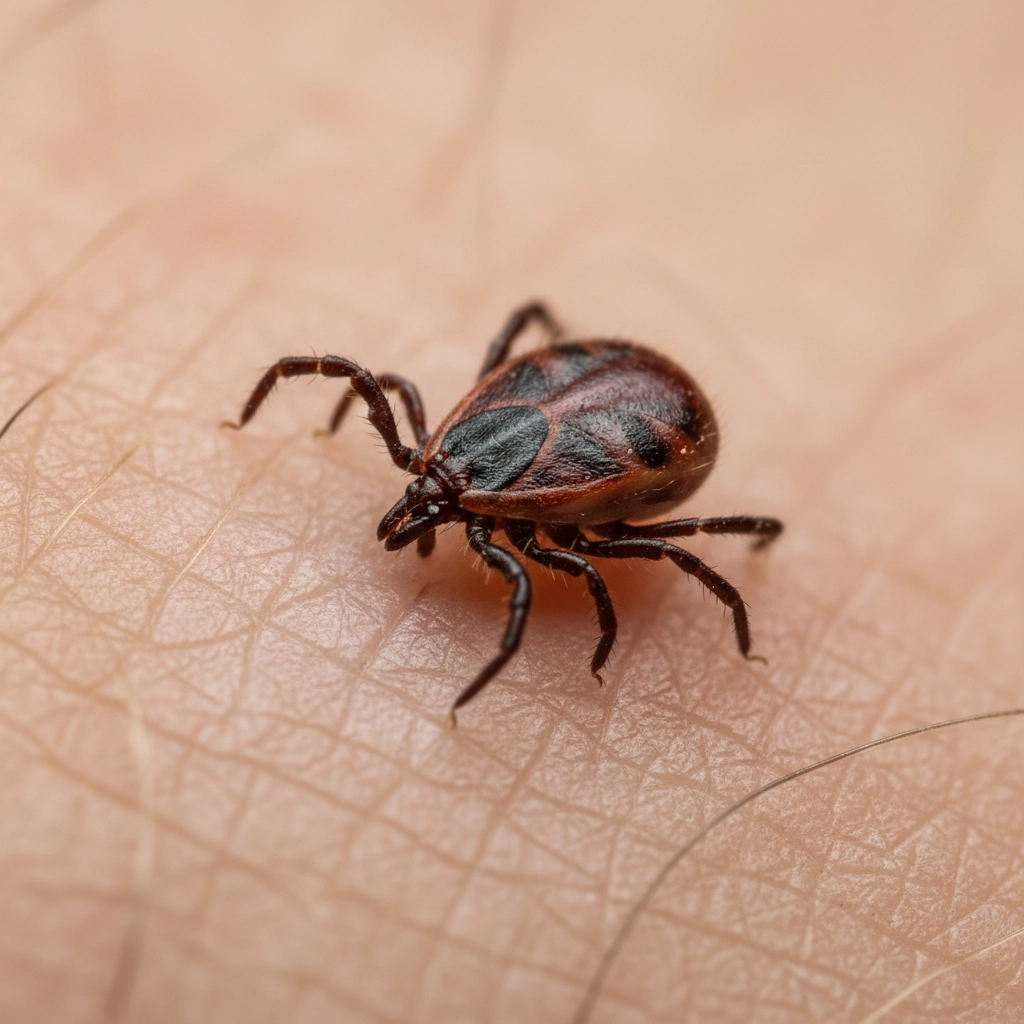Climate Change in Haliburton: 7 Pest Problems You Didn't See Coming (And How to Fix Them)
- Targeted Wildlife and Pest Solutions

- Sep 27
- 5 min read
Climate change is quietly reshaping Haliburton County's pest landscape in ways that catch property owners off guard. Rising temperatures, shifting precipitation patterns, and milder winters create perfect conditions for both familiar pests to thrive and new invasive species to establish themselves in your backyard.
Your cottage retreat or year-round home now faces pest challenges that weren't on anyone's radar even a decade ago. Understanding these emerging threats: and taking action now: protects your property investment and your family's health.
1. Beech Bark Disease: The Forest Killer Already Here
Beech Bark Disease represents the most immediate threat to Haliburton's forests. This devastating combination of scale insects and fungal infection has already begun destroying trees across the county.
The process works methodically: tiny beech scale insects puncture tree bark, creating entry points for deadly canker fungus. Once infected, large beech trees typically die within a decade. Malcolm Cockwell from Haliburton Forest estimates this disease will kill 10 to 15 percent of all trees in Haliburton County.
What you can do: Monitor beech trees on your property for white, waxy deposits on bark: the telltale sign of scale insects. Remove infected trees promptly to prevent spread to healthy specimens.

2. Hemlock Woolly Adelgid: The Coming Catastrophe
While not yet established in Haliburton, Hemlock Woolly Adelgid has been detected in Southern Ontario and is moving north. When it arrives: and experts say it's not if, but when: the results will be catastrophic.
This invasive insect targets hemlock trees exclusively, and virtually all infected trees die. Since hemlocks comprise another ten percent of Haliburton's forests, you're looking at massive forest die-offs that will fundamentally alter the landscape around your property.
What you can do: Learn to identify healthy hemlock trees now. Create a monitoring plan to check for cotton-like egg masses on branch undersides: the first sign of infestation.
3. Giant Hogweed: The Plant That Burns
Five known patches of Giant Hogweed have established themselves in Dysart municipality, creating serious public health hazards. This invasive weed produces sap that causes severe burns when exposed skin contacts sunlight after touching the plant.
The municipality estimates complete eradication would cost $55,000 and take multiple years, highlighting both the persistence and danger of this invader. Children and pets face particular risk due to their curiosity and lower height.
What you can do: Learn to identify Giant Hogweed's distinctive umbrella-shaped flower clusters and massive leaves. Never attempt removal yourself: contact professionals immediately if you spot this plant.

4. Chinese Mystery Snails: Lake Ecosystem Disruption
These invasive mollusks have exploded throughout Haliburton's lake system, fundamentally altering aquatic ecosystems. Unlike native snails, Chinese Mystery Snails give birth to live young already protected by shells, making them resistant to natural predation.
Female snails produce up to 100 juveniles annually, leading to explosive population growth. They displace native species, vector parasites, cause swimmer's itch, and reduce your lake's recreational value. Volunteer removal programs have extracted almost 1.4 million snails since 2021: and that's just the beginning.
What you can do: Inspect and clean all watercraft, trailers, and equipment before moving between water bodies. Report new infestations immediately to prevent further spread.
5. Tick Population Explosion: Lyme Disease Risk Soars
Warmer temperatures and milder winters allow tick populations to survive and thrive like never before. Black-legged ticks carrying Lyme disease are expanding their range northward, bringing serious health risks to areas previously considered safe.
Extended active seasons mean ticks now pose threats from early spring through late fall. Your family, pets, and guests face increased exposure during outdoor activities that once carried minimal risk.
What you can do: Create tick-safe zones around your property by maintaining short grass and removing leaf litter. Use approved repellents and perform daily tick checks after outdoor activities.

6. Mosquito Population Surges: Disease Vector Multiplication
Climate change creates ideal breeding conditions for mosquitoes through increased precipitation and temperature fluctuations. Standing water from intense storms provides countless breeding sites, while warmer temperatures accelerate mosquito development cycles.
These aren't just nuisance pests anymore. Mosquitoes carry West Nile virus, Eastern Equine Encephalitis, and other diseases that pose real health threats to your family and pets.
What you can do: Eliminate standing water around your property weekly. Clean gutters, empty containers, and maintain proper drainage to reduce breeding sites.
7. Structural Pest Activity Increases: Carpenter Ants and Termites
Warmer, more humid conditions favor wood-destroying insects like carpenter ants and termites. These pests remain active longer each year and can survive winter conditions that once controlled their populations naturally.
Your cottage or home's structural integrity faces increased risk as these pests establish larger colonies and cause more extensive damage over extended active periods.
What you can do: Inspect your property's foundation, siding, and wooden structures regularly for signs of damage. Address moisture issues immediately and maintain proper ventilation.
The Bigger Picture: Why Climate Change Accelerates Pest Problems
Climate change creates multiple advantages for pest species. Warmer temperatures allow cold-blooded insects to move faster, eat more, and reproduce more frequently. Earlier springs and longer growing seasons extend damage periods, while milder winters fail to provide the population-controlling freezes of the past.
Most critically, climate change introduces previously unknown pests to Haliburton as species expand their ranges northward. These new arrivals lack natural predators in the region, allowing rapid population growth and increased damage.
Eco-Friendly Prevention Strategies That Work
Support Natural Predators
Encourage beneficial insects like ladybugs, lacewings, parasitic wasps, and ground beetles. These natural allies control pest populations without chemical interventions. Plant native flowers and avoid broad-spectrum pesticides that kill beneficial species alongside pests.
Physical Barriers and Monitoring
Use row covers, netting, and other physical barriers during peak pest activity periods. Implement regular monitoring schedules to catch infestations early when control measures are most effective and least expensive.
Integrated Property Management
Maintain healthy soil and proper plant nutrition to help vegetation resist pest damage naturally. Remove dead plant material that harbors overwintering pests, and practice crop rotation in garden areas.

Professional Help: When DIY Isn't Enough
Some climate-driven pest problems exceed homeowner capabilities. Invasive species like Giant Hogweed require specialized equipment and expertise for safe removal. Forest pests affecting large areas need professional assessment and treatment strategies.
Early professional intervention often prevents minor pest issues from becoming major property damage or health risks. Professional pest control services understand local conditions and can implement targeted solutions that protect your property while preserving beneficial species.
Taking Action Now Prevents Future Problems
Climate change won't reverse itself, which means pest pressures will continue increasing. Properties that implement proactive management strategies now avoid costlier reactive treatments later.
Start with simple steps: eliminate standing water, monitor for early warning signs, and maintain healthy landscapes that resist pest pressure naturally. Document baseline conditions on your property so you can track changes and catch problems early.
Consider professional property assessments to identify vulnerabilities and develop comprehensive management plans. The investment in prevention pays dividends by avoiding emergency treatments and property damage.
Your Haliburton property represents a significant investment in both financial and personal terms. Protecting it from climate-driven pest threats requires understanding these emerging challenges and taking appropriate action.
The pests are already adapting to changing conditions: make sure your property management strategy adapts too. Whether through DIY prevention or professional services, proactive pest management keeps your cottage or home safe, comfortable, and valuable for years to come.
Ready to protect your property from climate-driven pest threats? Contact Targeted Wildlife and Pest Solutions for expert assessment and customized management strategies that work in Haliburton's changing environment.
Comments